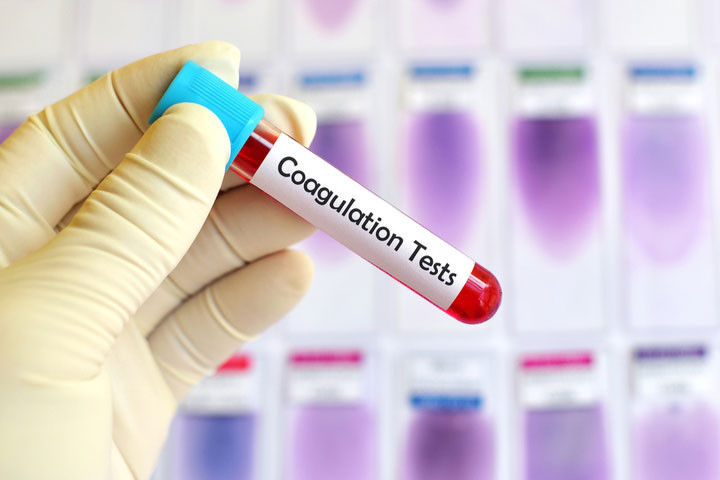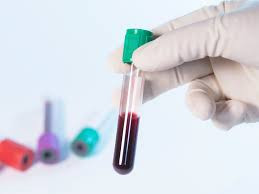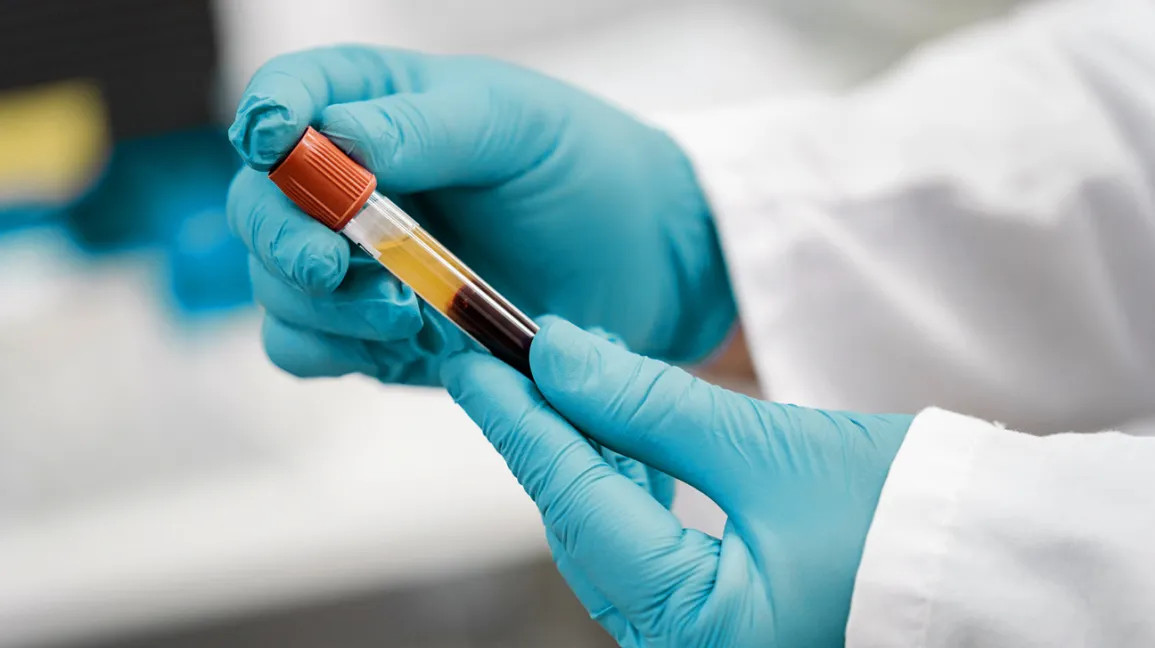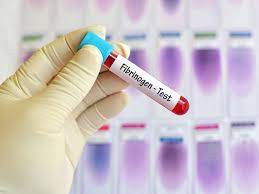Definition
Thrombin Time (TT) is a laboratory test used to assess the blood's ability to clot properly. Blood clotting is a vital process that occurs when an injury or bleeding happens, allowing the body to stop excessive blood loss and maintain circulatory stability.
Blood Clotting Mechanism
Bleeding occurs when blood vessels are damaged, such as through tears or cuts. Blood clotting factors, including fibrinogen, are essential proteins in this process. For clot formation to occur, fibrinogen must be converted into fibrin threads by the enzyme thrombin. These fibrin threads help create the blood clot.
If there is a disruption in the thrombin enzyme, whether through a decrease or complete absence, fibrinogen cannot be converted into fibrin, leading to an inability to form a proper clot. This disruption can result in continuous bleeding, potentially causing significant blood loss.
Thrombin Time Test
The primary function of the TT test is to:
-
Assess whether the thrombin enzyme is functioning properly.
-
Measure the duration it takes for thrombin to convert fibrinogen into fibrin threads.
-
Measure the time it takes for blood plasma (which makes up 55% of blood’s composition) to form a clot.
-
Determine the interval required for fibrin threads to form a clot within the blood plasma.
Indication
The TT test is a crucial diagnostic tool for individuals with a family history of blood clotting disorders or those suffering from chronic illnesses that may interfere with the clotting process. These include conditions such as chronic liver or kidney diseases.
Several key indications for the TT test include:
-
Identifying and diagnosing blood clotting disorders in both children and adults.
-
Investigating symptoms of excessive bleeding following injuries or frequent, unexplained bruising on the skin.
-
In women, a history of multiple miscarriages or heavy bleeding after childbirth.
-
A family history of blood clotting disorders.
-
-
Diagnosing disseminated intravascular coagulation (DIC), a condition where the body uses excessive fibrinogen, depleting the available amount of the protein.
-
Assessing patients with chronic or autoimmune diseases, such as cirrhosis, hepatitis, liver cancer, kidney cancer, lupus, or inflammatory bowel disease.
-
Evaluating the immune system's response to fibrinogen protein in patients post-surgery.
-
Monitoring patients who are receiving blood thinners like heparin.
Contraindication
There are no specific conditions or diseases that serve as contraindications or prevent individuals from undergoing the TT test. The test can be conducted on virtually all patients.
Preparation Before the Test
No special preparation is required before taking the TT test. However, it is important to inform and consult your doctor if you are currently taking medications that may affect the test’s results, including:
-
Blood thinners such as heparin or warfarin.
-
Medications that inhibit blood clotting directly, such as bivalirudin, argatroban, or similar drugs.
Test Procedure
The TT (Thrombin Time) test is a simple, inexpensive, and quick procedure, although certain factors may influence the results, including:
-
Incorrect blood sample collection
-
Clotting of the blood sample
-
Rupture of red blood cells in the blood sample
For the TT test, a blood sample is typically drawn from a vein, usually in the area of the arm crease.
To begin the procedure, the healthcare provider will identify the appropriate location for the blood sample collection and apply a tourniquet to the area, such as the upper arm. The skin where the blood will be drawn will be cleaned using an antiseptic solution, such as alcohol or cotton swabs. After allowing the area to dry, the provider will ask the patient to clench their fist while inserting the needle into the prepared area.
Once blood is drawn, it will be placed into a syringe tube, typically requiring around 3 to 5 mL of blood. After the blood sample is collected, the tourniquet is removed, the needle is withdrawn, and pressure is applied to the puncture site using an alcohol-soaked cotton ball to prevent any further bleeding.
Following the procedure, the patient can resume normal activities. The collected blood sample will then be sent to the laboratory for analysis.
Normal and Abnormal Values
| Value | Interpretation |
| <20 Seconds | Normal |
| >20 seconds | Prolonged |
Normal Results
This test is timed, measuring the duration required for the blood to clot. The normal TT (Thrombin Time) test value is consistent across all age groups, both children and adults, and is generally less than 20 seconds, typically falling between 14-19 seconds.
Abnormal Results
If the test results show a clotting time of more than 20 seconds, this is considered abnormal, indicating that the blood is taking longer than usual to form a clot. Such results are termed as "elongated." Several factors can contribute to this condition, including:
-
Reduced or impaired thrombin enzyme activity
-
Deficiency of fibrinogen protein
-
Disorders in fibrinogen protein production
When there are issues with fibrinogen or fibrin thread formation, the blood clotting process is disrupted, which can make it difficult or even impossible for a clot to form. This condition may lead to prolonged bleeding, resulting in significant blood loss.
Results and Recommendations (Follow-up Tests)
If the TT test results show a prolonged clotting time, this suggests that the blood is taking longer than normal to clot. Such conditions may arise from various diseases, including:
-
Fibrinogen protein deficiency (hypofibrinogenemia or afibrinogenemia)
-
Dysfunction of fibrinogen protein (dysfibrinogenemia)
-
Chronic liver diseases, such as cirrhosis, which affect fibrinogen production
-
Kidney cancer
-
Disseminated Intravascular Coagulation (DIC), a condition that leads to the widespread consumption of fibrinogen
It is important to note that a prolonged TT result alone is not sufficient for diagnosing a specific disease. The doctor will consider the patient's complaints, symptoms, medical history, medications, and family history in making a diagnosis.
Additionally, the doctor may recommend further tests to support a definitive diagnosis of blood clotting disorders, which may include:
-
aPTT (Activated Partial Thromboplastin Time): A test that measures the time it takes for blood to form a clot.
-
PT (Prothrombin Time): Measures the time for a blood clot to form, but differs from aPTT in that no activator is added during the test.
-
RT (Reptilase Time): This test is typically performed if the TT results are prolonged to further evaluate clotting ability.
-
Liver and kidney function tests.
Consult the Right Doctor
Prolonged TT test results suggest a potential blood clotting disorder. In such cases, you should consult an internist or pediatrician if you or your child experiences prolonged TT results for further evaluation.
Looking for more information about laboratory, radiology, and other examination results? Click here!
- dr Hanifa Rahma
Thrombin Time – University Of Rochester Medical Center. Rochester.edu. (2022). Retrieved 4 June 2022, from https://www.urmc.rochester.edu/encyclopedia/content.aspx?contenttypeid=167&contentid=thrombin_time
Thrombin Time – Testing. testing.com. (2022). Retrieved 4 June 2022, from https://www.testing.com/tests/thrombin-time/
Thrombin Time Test – Lybrate. Lybrate.com. (2022). Retrieved 4 June 2022, from https://www.lybrate.com/lab-test/thrombin-time
Durachim, A., Astuti, D. (2018). Bahan Ajar Teknologi Laboratorium Medik (TLM) (p. Multiple page). Kementerian Kesehatan Republik Indonesia.
Thrombin Time (TT) Test – Labcorpdrugdevelopment. Labcorp.com. (2022). Retrieved 4 June 2022, from https://drugdevelopment.labcorp.com/catalog/thrombin-time-tt-test.html
Princy, AJ. (2020). Check Coagulation Testing Taking a Bite Out Of The Comptition. ResearchDive. Retrieved 4 June 2022, from https://www.researchdive.com/blog/an-overview-of-coagulation-testing-blood-clotting-test












